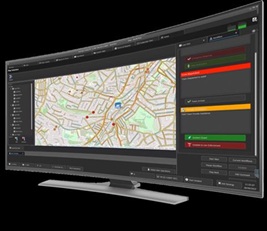
Dual Path (DP) Alarm Transmission Systems (ATS) are now the preferred choice for reliable alarm signalling in modern security installations. In the UK, the BSIA has issued important guidelines to help integrators and installation companies navigate the best route to minimise failures, reduce false alarms, and help ensure a reliable police response.
By using two independent communication channels—such as broadband, IP, wireless, or mobile networks—DP ATS greatly increases the chances that alarm messages reach the Alarm Receiving Centre (ARC) without delay. However, as networks become more complex and legacy technologies are phased out, preventing transmission failures is more important than ever.
Dual Path ATS offer significant advantages over Single Path (SP) systems. If one path fails, the other can still transmit the alarm. Yet, both paths can be affected by network outages, maintenance, or interference, leading to cycles of failure and restoration—even in well-installed systems. When both paths fail while the Intruder Alarm System (IAS) is set, a confirmed alarm is triggered, prompting a police response. This has led to a rise in false alarms, especially with radio-based DP ATS.
Higher-graded ATS report faults faster, which can result in more confirmed alarms and potential loss of a Unique Reference Number (URN). For example, multiple short failures in a DP4/DP3 ATS can generate several confirmed alarms and URN loss, even if the installer or user isn’t at fault. Lower grades (like DP2) have longer fault reporting times, reducing the risk of false alarms. SP ATS under similar conditions wouldn’t generate confirmed alarms or URN loss. And, according to the BSIA, if resilience is required, carefully consider whether path failures should trigger confirmed alarms.
Best practices for deploying DP ATS
● Risk Assessment:
Before installation, conduct a thorough risk assessment to determine the appropriate grading and design of the Intruder & Hold Up Alarm System (I&HAS).
The chosen ATS category can significantly influence failure reporting times to the ARC.
● Radio DP ATS considerations:
Building structure (concrete, brick, metal) can attenuate signals and create dead zones.
Electromagnetic interference from HVAC systems, power lines, Wi-Fi, and Bluetooth can disrupt radio signals. Position antennas for optimal coverage, avoid reusing old cables, maintain spacing, and follow manufacturer guidance.
Always test signal strength before enabling police response for DP failures, especially outside major cities.
● LAN path connections:
Provide a dedicated LAN port near the alarm device.
Understand and plan for customer network policies (firewalls, IP addresses, maintenance).
Ensure Wifi credentials are always up to date and equipment is matched to the network.
● Test periods and maintenance:
After installation or upgrade, agree on a test period with the client to operate the system normally and investigate any alarm conditions.
Frequent failures require corrective action—reconfiguring system paths, improving signal strength, or contacting the ISP for better options. If unresolved, consider downgrading the ATS category (with customer and insurer approval).
Dual Path ATS offer robust protection, but only when deployed and maintained with care. According to the BSIA, by following its guidance—conducting risk assessments, mitigating interference, and selecting the right ATS grade—security professionals can minimise failures, reduce false alarms, and ensure reliable police response.











